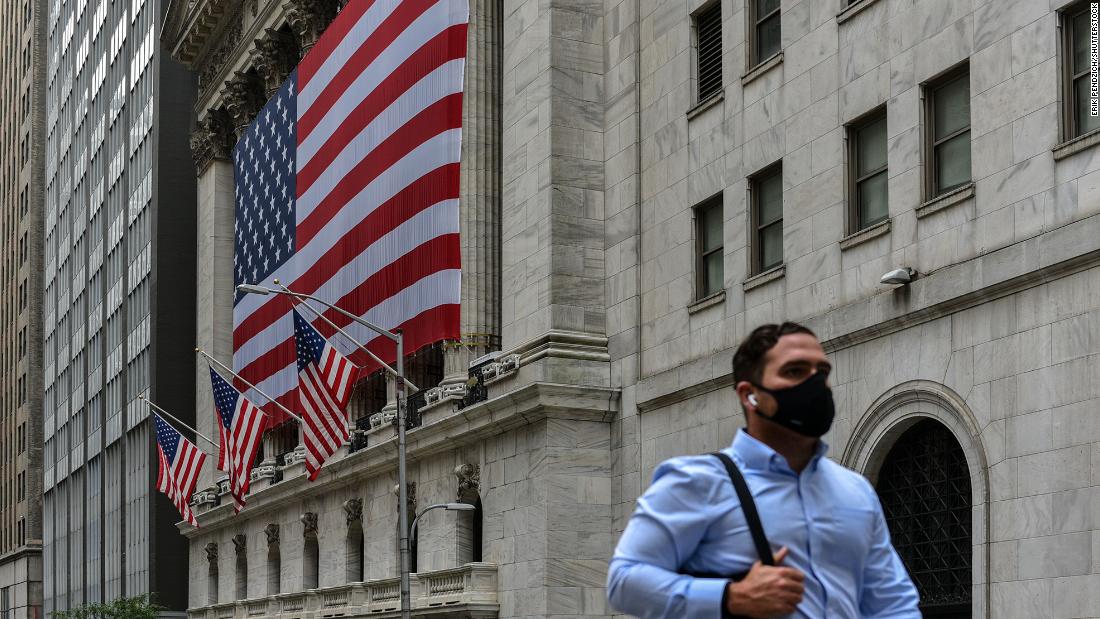

In truth, millions of Americans can’t feel the stock market boom.
“Holding up the stock market as the barometer for how the middle class is doing is totally erroneous — and very misleading,” Edward Wolff, an NYU professor who has studied stock ownership and inequality, told CNN Business.
Trump argued the sharp rebound in the stock market doesn’t only help “big people.”
“It affects everybody, it affects a person that owns $10,000 worth of stock in IBM or whatever company it may be,” Trump said during the town hall.
But rich Americans have far more skin in the stock market. That means when stocks go up (or down), the impact disproportionately goes to the wealthiest families.
The middle class, defined as households in the 20% to 80% range of wealth, owned just 6.6% of stocks outstanding, according to Wolff’s research.
“The performance of the stock market is so disassociated with the economic experience of the vast majority of Americans — particularly the middle class,” Wolff said. “Most Americans don’t really have much of a stake in the stock market.”
In any case, the stock market is not — nor has it ever been — the economy.
The S&P 500 is not a proxy for Main Street. It represents the fortunes of some of the world’s biggest companies, the ones with the most resources to get through a crisis.
At times, the stock market can feel completely disconnected from the fundamentals of the real economy.
Investors also tend to sniff out an economic recovery long before Main Street can feel it.
No matter the catalyst, there are significant benefits to the rapid recovery on Wall Street.
The fact the S&P 500 has skyrocketed more than 50% since the March 23 bottom helps inspire confidence among C-Suite executives. And that confidence can inspire more hiring and spending on research and factories that boost the real economy.
Likewise, consumers — especially ones that own significant amounts of stock — can take their cues from the market. While market meltdowns can cause Americans to hunker down, headlines about record stock prices can do the opposite. More confident consumers may choose to spend extra cash on iPhones, home repairs or vacations. And that has a real economic benefit.
Yet stocks are a particularly poor gauge of the financial health of average Americans, especially racial minorities.
Black households own just 1.6% of stocks and mutual funds, according to the Fed. Hispanic families owned the same amount. By comparison, White households control a staggering 92% of stocks and mutual funds, the Fed said.
There is also a deep divide across the education spectrum.
Americans with no college education own just 5.4% of stocks and mutual funds, according to the Fed. That’s down from nearly 17% in 1989.
All of this means that the boom in the stock market is amplifying the inequality divide that has helped fuel unrest in the United States in recent months.
“It widens the gap between the top groups and those in the middle. It exacerbates wealth inequality,” Wolff said.
That’s why the next president is unlikely to tie him or herself to the whims of the stock market to the degree that Trump has.
24World Media does not take any responsibility of the information you see on this page. The content this page contains is from independent third-party content provider. If you have any concerns regarding the content, please free to write us here: contact@24worldmedia.com

A Brief Look at the History of Telematics and Vehicles

Tips for Helping Your Students Learn More Efficiently

How To Diagnose Common Diesel Engine Problems Like a Pro

4 Common Myths About Wildland Firefighting Debunked

Is It Possible To Modernize Off-Grid Living?

4 Advantages of Owning Your Own Dump Truck

5 Characteristics of Truth and Consequences in NM

How To Make Your Wedding More Accessible

Ensure Large-Format Printing Success With These Tips

4 Reasons To Consider an Artificial Lawn

The Importance of Industrial Bearings in Manufacturing

5 Tips for Getting Your First Product Out the Door